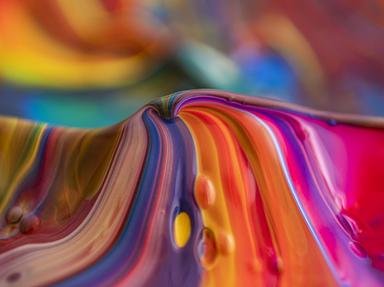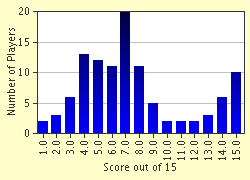Quiz Answer Key and Fun Facts
1. Many of Matisse's early paintings were in the still-life genre; the earliest show the distinct influence of Cezanne. Which of these was the earliest (1896)?
2. In his portraits, group paintings, and studies of the human form, Matisse displays a singular peculiarity; there is one part of the body which he either had difficulty painting or, for whatever reason, preferred not to paint. Which is it?
3. This painting from c.1900 marks a significant development in Matisse's style and is notable for its distinctly dark and sombre color palette.
4. The paintings "Lux, Calme et Volupte" (1904), "Woman With a Parasol" (1905), and "The Port of Abail" (1905) are painted in this style, of which the chief proponents were Georges Seurat and Paul Signac.
5. Matisse created two paintings with this title; with the exception of the style in which the figures are painted, the subject and the poses of the three figures are virtually identical.
6. One of Matisse's portraits from 1906 was nicknamed "Green Stripe" by its first owners because of the prominent green stripe running from the top of the forehead down to the tip of the nose which designates the division of the face, the left hand side of which is in a bizarre, lime-green shade. Who is the subject of this painting?
7. "Goldfish" (1911) is arguably Matisse's best known and most characteristic painting. Bowls of goldfish were, in fact, a favorite feature of Matisse's; which of the following paintings does NOT feature a goldfish bowl?
8. The grouping of figures in the center of the 1906 painting "Bonheur de Vivre" was used for this famous painting, dating from 1909.
9. The 1907 painting "La Chambre Rouge", or "Harmony in Red", was originally painted as a study in this color.
10. Matisse and his wife are depicted in this painting, which the artist worked on between 1908 and 1912.
11. Matisse's son Pierre is featured in this painting, dating from 1916.
12. With the model Henriette Darricarrere, Matisse was able to achieve "the most complete identification of the artist with his model." Which of these paintings features Henriette?
13. In the 1940s and 50s, Matisse adopted a new medium, which he used to create such works as "Icarus" (1944), the illustrations for the 1947 book "Jazz", "Chinese Fish" (1951), "Blue Nude" (1952), "The Sorrow of the King" (1952), and "Large Composition With Masks" (1953). Which medium did he use for these works?
14. Several of Matisse's paintings, including "Bonheur de Vivres" (1906), "Nude, Spanish Carpet" (1919), and "Young Woman in White, Red Background" (1944) feature what are called "visages vides". What does this term mean?
15. The decoration of the chapel of the Dominican convent at Vence occupied Matisse from 1948 to 1951, and he regarded it as his spiritual testament. His work at Vence included designing the stained-glass windows, the tabernacle, and the vestments, as well as three murals depicting St. Dominic, the Madonna and Child, and the Stations of the Cross. What distinctive feature(s) do these paintings share?
Source: Author
jouen58
This quiz was reviewed by FunTrivia editor
fringe before going online.
Any errors found in FunTrivia content are routinely corrected through our feedback system.

